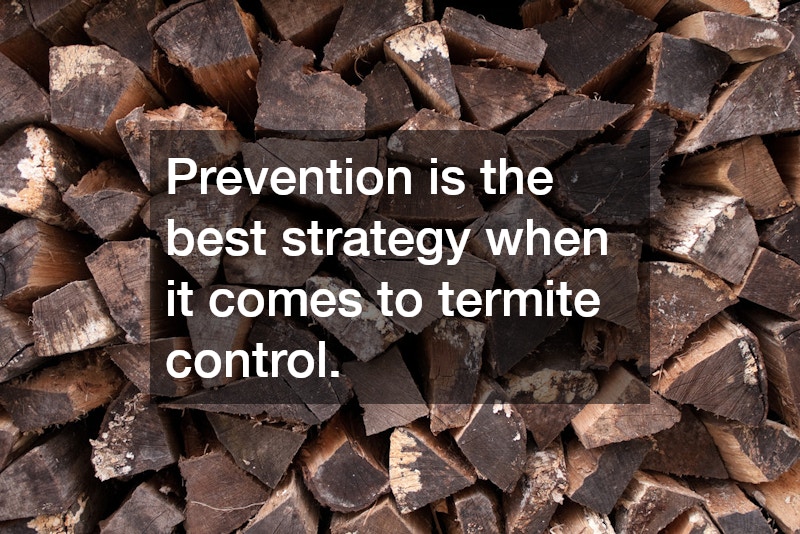Termites are small insects that play a significant role in the decomposition of wooden materials. While they are essential to the ecosystem, when these insects find their way to your property, they can cause extensive damage. Understanding their habits is the first step in effective termite control.
Termites operate in colonies that can range from a few thousand to millions of individuals. Each colony can consist of several types of termites, including workers, soldiers, and reproductives, each playing a distinct role.
The worker termites are primarily responsible for feeding on wood and can create structural problems for homeowners.
These insects thrive in environments with moisture and prefer to feed on wood and other cellulose-based materials. Their activity is often undetected until significant damage has occurred, as termites can enter a property through tiny cracks and crevices. Regular inspections and preventative measures are crucial in mitigating their impact.
Identifying Signs of Termite Infestation
One of the key indicators of a termite infestation is the presence of mud tubes. These are small tunnels constructed by termites to protect them as they forage for food and travel between their nests and food sources. Detecting these structures can be an indication of active termite presence.
Another sign is the presence of discarded wings near windowsills, doors, or other entry points. Termites swarm during mating seasons to establish new colonies, leaving behind these wings as a telltale sign. When you spot such signs, it is crucial to contact a termite control professional to assess the situation further.
Additionally, you might notice wood damage, which manifests as hollow-sounding timber or blistered wood surfaces. As termites consume wood from the inside out, they leave behind a thin veneer, which collapses over time. Addressing these signs promptly can help prevent extensive structural damage to your property.
Methods of Termite Control
Effective termite control involves a combination of methods tailored to eliminate and prevent infestations. Chemical treatments, such as termiticides, form a protective barrier around the property, deterring termites from entering the premises. These chemicals are applied by professionals who ensure they do not harm humans or pets.
Baiting systems are another popular method, involving setting up bait stations around the property. These baits contain substances that termites consume and share with their colony, ultimately eradicating the entire colony. Choosing a reputable pest control service to install and monitor these systems can greatly increase their effectiveness.
Non-chemical methods include reducing moisture around your foundation, removing wood debris, and repairing leaks and gaps in your property’s structure. Implementing these preventive actions can significantly decrease the chances of termite infestations. Regular inspections by certified professionals complement these methods, ensuring early detection and control.
Why Professional Intervention is Crucial
Dealing with termites is a challenging task that often requires the expertise of professionals. Specialists in termite control possess the skills and experience needed to assess the extent of an infestation and determine the most effective treatment plan. DIY approaches rarely work against these persistent pests due to their complex behavior and hidden nature.
Professional pest control services use advanced technology and methods to detect and eradicate termites. They offer tailored solutions that address specific areas of concern, minimizing damage and preventing future infestations. Consistent follow-up treatments and inspections by professionals can protect your property in the long term.
Ignoring a termite problem can lead to severe structural damage and devaluation of your property. Professional intervention provides peace of mind by ensuring that your home is free from these destructive pests. Investing in professional services ultimately saves time and money by preventing costly repairs and restoration in the future.
Preventing Future Infestations
Prevention is the best strategy when it comes to termite control. Keeping your property well-maintained and free from excess moisture can deter termites from setting up colonies near your home. Simple actions such as fixing leaky pipes, ensuring adequate drainage, and maintaining proper ventilation can reduce the likelihood of infestations.
Planting greenery away from your home’s foundation and keeping mulch and wood piles a safe distance can also help prevent termite access. Using termite-resistant building materials and treating wood with protective products can add a layer of security against these pests. Regular inspections by termite control professionals ensure any potential threats are addressed promptly.
Staying informed about the subtleties of termite behavior and the latest control methods is an ongoing process. With knowledge and professional support, homeowners can maintain a termite-resistant environment. Proactive measures, combined with professional assistance, ensure your property remains safe and termite-free.

